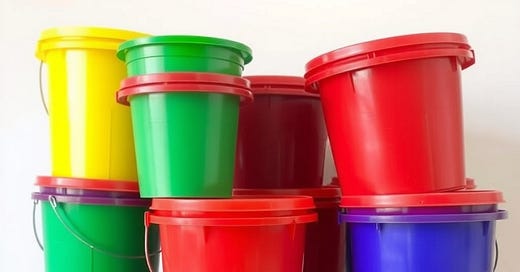A Guide to Colour Coding in Food Businesses
Supplement for paying subscribers
Introduction
Colour coding in the food industry involves assigning specific colours to tools, equipment, and areas to enhance safety and hygiene. Such systems help prevent cross-contamination, a major driver of food safety incidents, outbreaks and recalls.
Colour coding allows for clear and consistent separation of tasks, such as handling raw and cooked foods or managing allergens. It also improves organisation and efficiency by making equipment easy to identify and reducing the risk of errors.
Table of Contents
How to implement colour coding
What about colour-blind workers?
Why colour code?
Microbial cross-contamination and allergen-related mistakes account for almost 70 percent of all food recalls. And a recall will typically set the recalling company back by $US10 million in direct costs alone (source).
Any system which can reduce the likelihood of cross-contamination with microorganisms, allergens or foreign bodies could be worth its weight in gold. Colour coding…
Minimises the risk of




